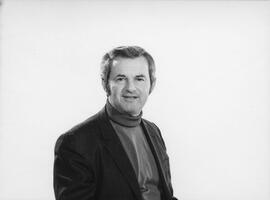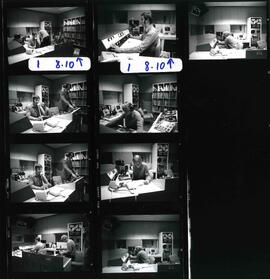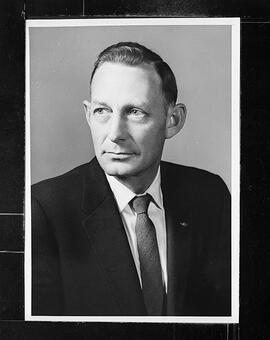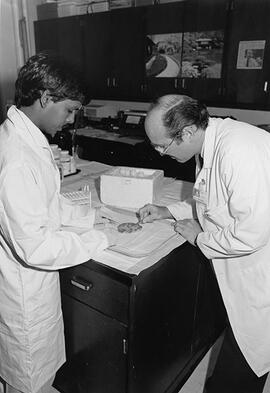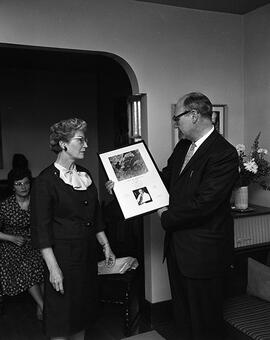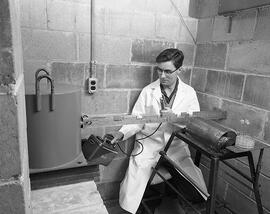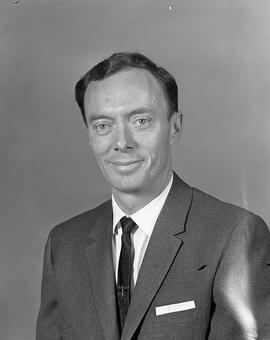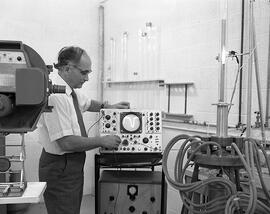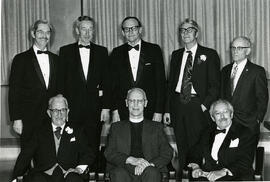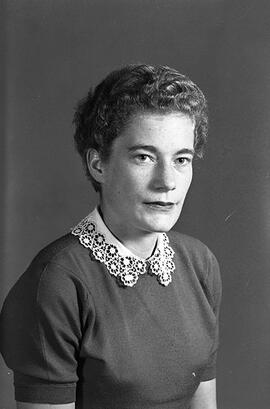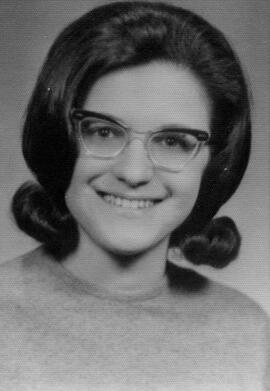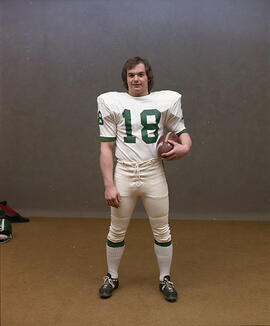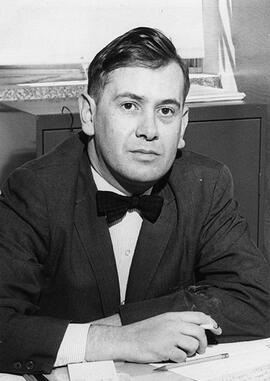Image of Dr. Hildred Rawson, wife of Dr. Donald S. Rawson, the late head of the Department of Biology, receiving a framed scroll from Woodrow S. Lloyd, Premier of Saskatchewan, commemorating the naming of Rawson Bay in northern Saskatchewan. The scroll includes an aerial view of Rawson Bay on Nemeiben Lake and a portrait of Dr. Rawson.
Bio/Historical Note: Dr. Hildred I. Rawson was affiliated with the McNeil Reading Institute in Saskatoon. Dr. Rawson first became interested in helping students having blocks in reading and spelling. Later she left Saskatchewan to study with outstanding linguist specialists in Canada and the United States. Dr. Rawson attempted to develop an approach through an organized phonetic program to help these students. She developed a course where sound, sight and writing are closely interwoven and in a logical fashion. The pupils got a sense of sentence structure, spelling, reading and enjoyment. In 1962, for demonstration purposes, Dr. Rawson instructed a group of Yorkton children taken from the public schools. Later she went many Saskatchewan schools and did further demonstrations, which were followed up bv a discussion with the teachers of that particular school. Dr. Rawson earned a PhD in 1969 at the University of Alberta; her thesis was titled A Study of the Relationships and Development of Reading and Cognition. She published several papers. Dr. Rawson died in 1997 in Ottawa at age 93.
Bio/Historical Note: Dr. Donald Strathearn Rawson was born in Claremont, Ontario, on 19 May 1905. He enrolled at the University of Toronto in 1922, and earned BA, MA, and PhD degrees by 1929. Dr. Rawson demonstrated outstanding ability as a student and was awarded a doctorate at age 24; his doctoral thesis investigated the bottom fauna of Lake Simcoe. He was a champion wrestler at the U of T. Dr. Rawson joined the Biology Department of the University of Saskatchewan as Assistant Professor of Zoology in 1928 and became Head of the Department in 1949. His research in limnology covered two distinct periods. From 1928 to 1934 he concentrated on lakes of the newly established Prince Albert National Park. This work involved physico-chemical, biological, and fisheries studies, and included specific experiments in fisheries management. Dr. Rawson married Dr. Hildred Patton in 1932. From 1935 to 1941 he carried out extensive research in the National Parks of the Canadian Rockies and in Riding Mountain National Park, Manitoba. The primary aim of these investigations was the collection of limnological information as applied to fisheries management, but contributions of fundamental significance also resulted, spanning the gap between theoretical and applied science. In the late 1930s Dr. Rawson surveyed saline lakes in southern Saskatchewan. In 1942 Dr. Rawson began work on Canada's large northern lakes (including Reindeer, Athabasca and Great Slave Lakes) that brought him international fame. After 1947 he devoted most of his attention to investigations of Lac La Ronge and Amisk Lake in the Churchill River drainage system. Subsequently, many other northern Saskatchewan lakes were studied. Dr. Rawson received many honours during his lifetime. He was president of the Limnological Society of America and of the Canadian Conservation Association; director of the Fisheries Research Board of Canada; a member of the Royal Commission on Fisheries for Saskatchewan; and a Fellow of the Royal Society of Canada. Rawson's death at age 51 on 16 February 1961, at the peak of his scientific and teaching career, was a monumental loss to science in Canada. Rawson Crescent in the College Park neighbourhood honours him.

